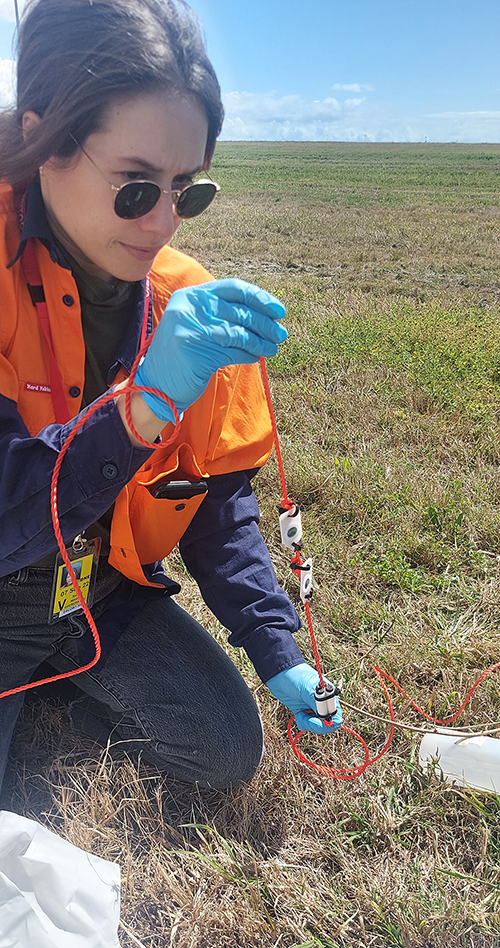
Widespread contamination of environmental waters by per- and polyfluoroalkyl substances (PFAS) has occurred from the historic use of aqueous film forming foams (AFFFs) and ongoing use of PFAS in consumer and industrial applications. QAEHS has developed a novel Microporous Polyethylene Tube (MPT) passive sampler to improve our ability to measure PFAS in the aquatic environment and wastewater. The passive sampling tool and associated predictive uptake models provide a cost-effective quantitative technique, allowing for sensitive, time integrative monitoring of a wide range of PFAS.
The MPT passive sampler can be used to yield representative spatial contamination information supporting efforts to predict plume movement and mass flux from contaminated sites. This can facilitate the study of PFAS fate and transport, including transformation to perfluoroalkyl acid (PFAA) precursors in aqueous environments.
Being time integrative, the sampler can facilitate understanding of exposures and ongoing loads of PFAS in dynamic systems, such as surface waters and wastewaters. This can be used to better understand risk to aquatic environments and ongoing PFAS loads, for example, into and out of wastewater treatment plants.
Outcomes
Outcomes of this project include a suite of innovative passive sampling technologies that:
- are validated for a wide range of chemicals and environments
- provide equivalent sensitivity to grab sampling
- provide time integrated concentration information to better understand impacts in dynamic systems
- are appropriate for linking to analytical methods to identify PFAS of emerging concern.
We have also developed a set of good practice guidelines for the use and interpretation of passive sampler data.
The technology developed in this project has been used by industry and governments (state EPAs) in Australia and internationally to monitor PFAS concentrations.
The MPT passive sampler was further used to support monitoring efforts in drinking water catchments in Southeast Queensland via the Seqwater catchment passive sampling monitoring campaign. Its utility has been highlighted on the Seqwater website.
The MPT passive sampler was further used as part of the global AQUA-GAPS program aimed at monitoring persistent mobile contaminants in marine and freshwaters of the world.
The MPT passive sampler has been used as part of an interlaboratory comparison exercise by the European NORMAN network. Over 20 participating laboratories across the EU, US, Canada and Australia have analysed extracts from MPT passive samplers for a wide range of target and non-target PFAS to investigate inter-laboratory variability and comparability of results. More information is available in the proposal for the NORMAN Joint Programme of Activities.
Research Outputs
Research Impact
This work has been funded by the US Department of Defense Strategic Environmental Research and Development Program (SERDP ER20-1156) in collaboration with the Colorado School of Mines, Griffith University and Jacobs Australia. With contributions from the Australian Department of Defence, Brisbane Airport, Queensland Department of Environment and Science (DES), EPA Victoria and Seqwater in Australia and a number of international organisations including NIVA (Norway), University of Barcelona (Spain) and KWR (The Netherlands). The tools developed have already been utilised by agencies worldwide to help PFAS investigation and monitoring efforts.
Project Materials
- MPT passive sampler fact sheet
- MPT passive sampler deployment guide in surface water
- MPT passive sampler deployment guide in groundwater
- MPT passive sampler preparation and extraction Standard Operating Procedures (SOPs) Email A/Prof Sarit Kaserzon
- Good practice guidelines for the use and interpretation of passive sampler data Email A/Prof Sarit Kaserzon
Passive Sampling Informational and Deployment Video
Grant Support
This project was supported by the US Department of Defense Strategic Environmental Research and Development Program (SERDP ER20-1156).







